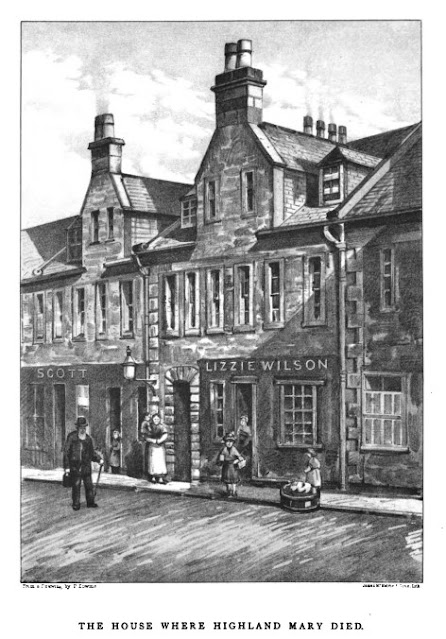In 1790 the Clyde Society was set up in Port Glasgow. It was described as a "Friendly Society", set up by a group of people to provide help for those members going through difficult times". The Clyde Society was to consist "of persons above the labouring class ... merchants and masters of ship". Contributions were made for the relief of widows and orphans of members of the society. Widows “whether rich or poor” were to receive a certain sum per annum and an amount for every child under 14 years of age. Any member who “fell into reduced circumstances” was entitled to receive an amount at the discretion of the Directors of the society.
 |
| Source - Watt Institution |
Members paid £5 on admission and 5 shillings quarterly as a fee. Members had to have contributed for five years before they could receive any benefit. Failure to pay the quarterly account led to dismissal from the Society. An exception was given to those who were at sea or had moved to more that 20 miles from Port Glasgow. It all sound very worthy, however as is the case in all such societies, difficulties arose in defining the rules in individual cases.
Alexander Malcolm a merchant in Port Glasgow and later a vendue-master (auctioneer) in Glasgow became a member and continued to pay his quarterly contribution for about 10 years. He became bankrupt in May 1801 and was sent to prison in October and remained there until May 1802. While in gaol, he was excluded from being a member of the Society because, of course, he had been unable to pay his account. He obtained his freedom by a cessio bonorum, the definition of which is "the voluntary surrender of goods by a debtor to his creditors".
He died in October 1803 and since his bankruptcy he had been unable to make his contributions to the Clyde Society. On her husband’s death, Elizabeth Steel, who was left with four children, submitted a petition to the Sheriff Depute of Renfrewshire in which she asked that she be paid the allowance stipulated by the Society to the widows and children of deceased members. She was told that because her husband’s expulsion from the Society, she was not entitled to any payments. At the time, Benjamin Moore was president of the Clyde Society. Other members supporting him in this action were William Scott, coppersmith and James Foster surgeon.
After a lot of discussion, the Sheriff made an statement on 28 June 1805 - “Finds it admitted that the pursuer’s deceased husband paid up his quarters accounts and conformed himself to the rules of the Society, for the space of five years, and that his dismissal proceeded from no negligence, but mere inability to continue his payments, his widow, the pursuer, ought not, for any thing contained in these articles founded on, to be excluded from the aliment craved; therefore, allows her a proof of her husband’s indigence for the year previous to his expulsion, and to the defender’s conjunct probation”. In other words, she was to be given the appropriate payments.
The Society presented a petition arguing against this judgement, but it was refused. The Sheriff stated “I have no difficulty in this case. The object of the institution is declared to be the support of reduced members, their widows and children. It is implied in these words, that inability to pay is not a ground of forfeiture during the lives of the members; and the same thing is implied in the event of their death.” The Society took the matter further, to the Court of Session. The basic question being – “Whether Mr Malcolm, at the time he failed in paying his quarterly accounts, was within 20 miles of Port Glasgow or not?" After much discussion the Clyde Society were found liable for the widow’s expenses. Again, the Society argued the decision, but this time it was refused. The Sheriff's judgement that an amount should be paid to Mrs Malcolm and her children was confirmed. It was not until 1814 that matters were finally resolved. The legal teams involved were - For pursuers (the widow) – Thomas W Baird Esq (Advocate), agent J Greig WS, and for the Society – Francis Jeffrey (Advocate) and John Greenshields agent – Francis Snodgrass WS.
A protracted legal case must have cost the Society dearly.



.JPG)
.JPG)


.JPG)


.JPG)